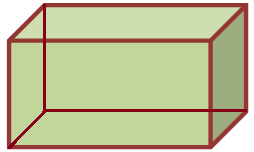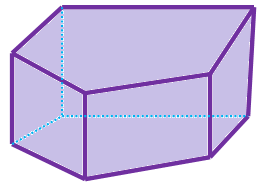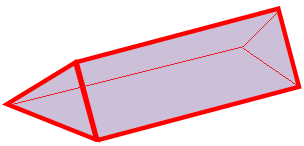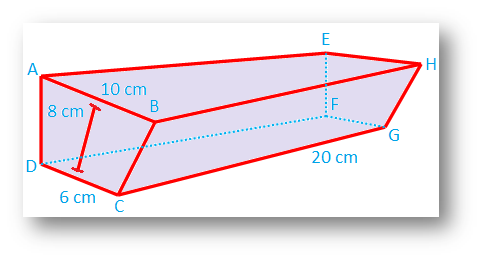Subscribe to our ▶️ YouTube channel 🔴 for the latest videos, updates, and tips.
Cylinder
A solid with uniform cross section perpendicular to its length (or height) is a cylinder. The cross section may be a circle, a triangle, a square, a rectangle or a polygon. A can, a pencil, a book, a glass prism, etc., are examples of cylinders. Each one of the figures shown below is a cylinder.
The second figure shown above is a cuboid, which is also a cylinder. The cylinder depicted in the last figure is also called prism.
The formule for the volume and the surface area of a cylinder are the same as those of solids with uniform cross section.
Volume of a Cylinder = (Area of the cross section) × length (or height or breadth)
= A × h
Lateral surface area of a Cylinder = (Perimeter of the cross section) × length (or height or breadth)
= P × h
Total surface area of a Cylinder = Lateral surface area + Sum of the areas of the two plane ends
= P × h + 2 × A
Solved Problems on Volume and Surface Area of Cylinder:
1. The cross section of a cylinder is a trapezium whose parallel sides measure 10 cm and 6 cm, and the distance between the parallel sides is 8 cm. If the cylinder is 20 cm long, find (i) the area of the cross section; and (ii) the volume of the cylinder.
Solution:
(i) The area of the cross section = area of the trapezium
= \(\frac{1}{2}\) (10 + 6)8 cm2
= 64 cm2
(ii) The volume of the cylinder = (Area of the cross Section) × length
= 64 cm2 × 20 cm
= 1280 cm3
2. The cross section of a cylinder is a regular hexagon of side 4 cm and its height measures 12 cm. Find its (i) lateral surface area, and (ii) total surface area.
Solution:
(i) The perimeter of the cross section
= Perimeter of a regulator hexagon of side 4 cm
= 6 × 4 cm
= 24 cm.
Therefore, lateral surface area of the cylinder
= (Perimeter of the cross section) × height
= 24 cm × 12 cm
= 288 cm2
(ii) Total surface area = lateral surface area + 2 × (Area of the Cross Section)
= 288 cm2 + 2 × (Area of the regular hexagon of side 4 cm)
= 288 cm2 + 2 × \(\frac{3√3}{2}\) × 4^2 cm2
= (288 + 48√3) cm2
= (288 + 83.04) cm2
= 371.04 cm2
Didn't find what you were looking for? Or want to know more information about Math Only Math. Use this Google Search to find what you need.









New! Comments
Have your say about what you just read! Leave me a comment in the box below. Ask a Question or Answer a Question.